
The United States Drug Enforcement Administration (DEA) has just released an Officer Safety Bulletin warning officers on the extremely dangerous exposure risks to the drug Fentanyl. The first warning went out in March, 2015, but the continued risk posed to law enforcement, first responders, and the public at large, has led the Federal agency to send out a second warning. This has come on the heels of dozens of Fentanyl overdose deaths from users, and several near misses with law enforcement officers exposures during investigations.
Fentanyl is a synthetic narcotic analgesic (opioid) used in the treatment of chronic or severe pain. The drug is extremely potent with a rapid onset, but only a short duration. Fentanyl is extremely dangerous, though it has a genuine medical purpose allowing it to have a Schedule II controlled substance rating. Fentanyl is roughly 80-100 times more potent than morphine, and even 40-50 times more potent than pharmaceutical grade heroin! Generally used as an anesthetic or analgesic (in a highly diluted form), Fentanyl has had tremendous positive effects for those suffering from higher levels of cancer or those with battlefield (severe) injuries.
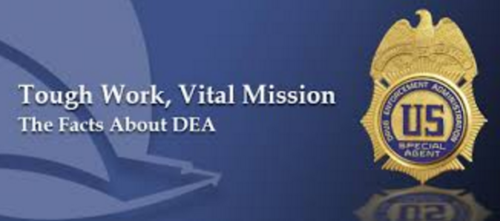
Fentanyl and the Analogues
One of the most common forms of Fentanyl found by law enforcement officers in the field is the transdermal patch. These patches, typically placed on a shoulder, hip, chest, or back, allow delayed release of Fentanyl over a longer period of time. However, Fentanyl can come in all of the major forms of medical delivery including liquids (intravenous), pills, sublingual spray, intranasal sprays, lozenges, and even a lollipop (Actiq).
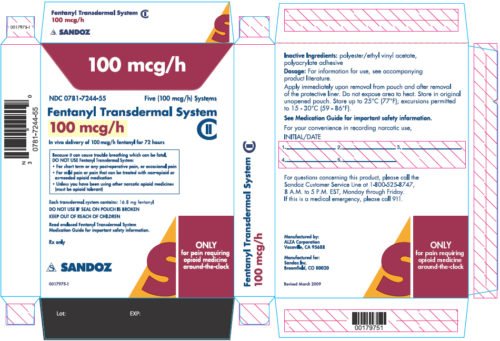
Officers should be keenly aware of how dangerous Fentanyl really is. For instance, most drugs (including heroin) are often measured in grams for small doses. Small heroin doses (often called “buttons”) can be as little as 0.10 grams. These “buttons” are typically flattened sticky circles of heroin that can be easily melted down for injecting. However, Fentanyl is distributed in micro-grams, or .001 grams. That is 100 times less than a typical heroin dose!
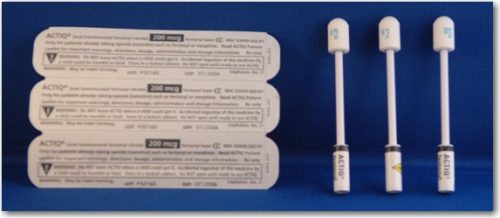
The Actiq lollipop has actually been used extensively by Army and Navy medics in Afghanistan and Iraq for severe combat casualties. The lozenge is typically taped to an injured soldier’s finger, and then the lozenge is inserted between the teeth and cheek. As the lozenge dissolves and delivers the pain-killer, the soldier’s finger will often fall from their mouth when the medicine has been completely delivered.
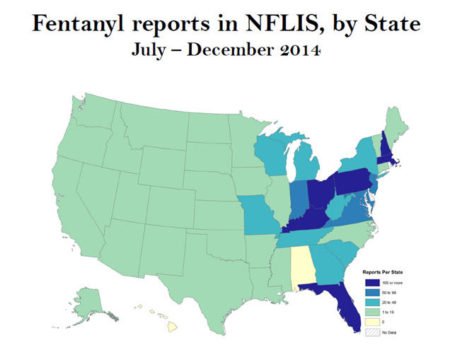
In addition to Fentanyl-labelled products, the following generic labels are also used:
- Sublimaze
- Actiq
- Durogesic
- Duragesic
- Fentora
- Matrifen
- Haldid
- Onsolis
- Instanyl
- Abstral
- Lazanda.
The Surge in Hard-Core Drugs
As more and more States legalize or decriminalize Marijuana, the side effects could not be more profound. Across the nation communities have seen abnormal spikes in heroin, and methamphetamine use and overdoses. The reason for this is the Drug Cartels in Mexico are adapting to the changing market. Since Marijuana is becoming more available to customers in the United States, they are simply flooding the market with other drugs they have readily available.

These drugs include methamphetamine, heroin, cocaine, and a wealth of synthetic drugs in the forms of pills and other delivery methods. Many of these hard-core drugs are even more powerful than the drugs of the 1980’s that caused a surge in the “War on Drugs” due to the horrific surge in violence associated to the drugs.
The reason the drugs are more powerful is the Mexican Drug Cartels are using highly sophisticated and equipped laboratories to refine and enhance the drugs the sell. The images of clandestine jungle laboratories in Columbia from the 1980’s are far from accurate today. Today, the Mexicans own the drug routes and exercise an enormous influence on every illegal drug coming into the United States. In addition, the Cartels run elaborate laboratories making their own drugs to match the high demand from American and European customers.
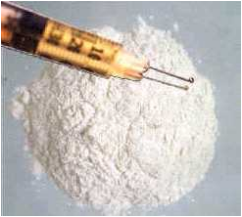
Heroin has seen a very disturbing surge in recent years, as well as all narcotic analgesics (Fentanyl included). The serious problem with all narcotic analgesics is the potential of abuse from novice and addict alike. Unlike many other drugs that can also kill, narcotics (opioid based) are highly prone to killing the user in an overdose situation – even on the first use. This is because they depress the Central Nervous System so much they literally stop the heart and lungs from working.
Law Enforcement and Fentanyl
Officers should be particularly cautious any time they are searching a suspect or vehicle, and use protective gloves and other measures to protect themselves. However, if there is any suspicion Fentanyl is present an additional layer of security must be taken. Officers should be more concerned about Fentanyl than they were in my early days about PCP! Some of the safety measures that should be used or at least considered include:
- Double up on latex gloves
- Wear leather/kevlar gloves over latex gloves
- Wash leather/kevlar gloves after search
- Cover exposed arms
- Wear eye protection
- Consider using an air filtering mask
- DO NOT FIELD TEST.
If possible, have a trained crime scene investigator collect any suspected Fentanyl, and make sure the substance is double-bagged for safety. DEA cautions officers not to field test suspected Fentanyl in the field, and the substance should not be stored in Department evidence rooms either. Instead, the suspected Fentanyl should be taken to an appropriate criminal or drug testing laboratory as soon as possible. Laboratory chemists are trained and aware of Fentanyl safety procedures, and can handle and test the substance safely.
To combat against accidental exposure to Fentanyl, or any other hard-core drug, police agencies should ensure their ambulance services are stocked with Narcan/Naloxone. These medical wonder drugs have been used in thousands of drug exposures or overdoses to immediately combat the killing effects of these hard-core drugs.
Final Thoughts
This is a no-joke warning with extreme consequences for those who do not heed the warning. Stay safe! Wear your protective gloves (latex, leather, Kevlar). Do not allow fellow officers to be cavalier around controlled substances.